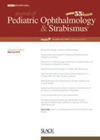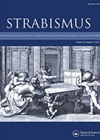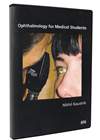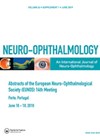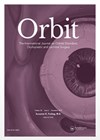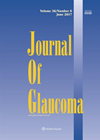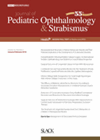You searched for "radiation"
Superior oblique muscle tuck
The authors investigate the efficacy and safety of isolated superior oblique tucking in patients with congenital superior oblique palsy. The study includes 21 cases: eight females and 13 males aged 2-34 years. All had obvious superior oblique under action and...Are single IOP measurements adequate for estimating the effect of IOP lowering interventions?
1 December 2014
| Lona Jawaheer
|
EYE - Glaucoma
The World Glaucoma Association recommends that, to assess the effect on intraocular pressure (IOP) of medication or surgery, the mean of multiple measurements of postoperative IOP is a better reflection of IOP than a single measurement of postoperative IOP. The...
Ocular neuromyotonia
The authors report a cohort of ten patients (nine female) with ocular neuromyotonia (ONM) for clinical signs and symptoms, treatment methods and outcome. Six had affected vertical muscles including superior oblique, inferior rectus and superior rectus. Four had affected lateral...Ophthalmology for Medical Students DVD
1 October 2015
| Gwyn Samuel Williams
|
EYE - Neuro-ophthalmology, EYE - Paediatrics, EYE - Strabismus, EYE - General
Medical students spend far too little time in clinical ophthalmology, barely a week in a whole five year course. A week usually taken up by learning very basic facts about the eye and about the specialty, which means that any...
Surgical strategies to manage incomitant strabismus in adults
Incomitant vertical and / or horizontal strabismus is a challenging presentation. Patients are usually symptomatic as the onset is either sudden so they haven’t developed any coping mechanisms or very complex so that any coping mechanisms will not cover all...Using graphical illustration to predict giant cell arteritis
1 August 2019
| Claire Howard
|
EYE - Neuro-ophthalmology
|
Giant cell arteritis, nomogram, prediction model, temporal artery biopsy
A nomogram is a chart or graph of scaled variables that facilitates the approximate computation of a mathematical function via intersecting lines. The objective of this study was to illustrate the use of a nomogram for the prediction of giant...
Prism adaptation outcomes in convergence excess esotropia
This study reports the changes to angle of deviation following prism adaptation in a group of 58 patients with convergence excess esotropia and their surgical outcomes. Age at prism adaptation was 7.2 (SD1.82) years. One child refused prisms and two...Computer-assisted surgery in the orbit
In this paper the authors describe the growing use of computer-assisted surgery in ophthalmology. It is already described as a powerful adjunct in neurosurgery and sinus surgery and here they describe their experience of using it for the orbit; specifically...Uveal melanoma
3 August 2023
| Mertcan Sevgi, Timothy Beckman, Paul Cauchi, Julie Connolly, Vikas Chadha
|
EYE - Pathology, EYE - Oncology, EYE - Imaging
Uveal melanoma is the most common primary intraocular tumour. However, they are still rare, with an incidence of 2-8 per million [1]. The presence of a choroidal naevus is a risk factor for uveal melanoma [1]. Patients with choroidal lesions...
UKISCRS donates £5,000 to support ophthalmology in Ukraine
31 March 2022
UKISCRS Council unanimously decides on donation, supporting ophthalmic aid in Ukraine.
Effects of phacoemulsification on IOP and drug use in glaucoma
1 December 2017
| Chrysostomos D Dimitriou
|
EYE - Glaucoma
For patients with comorbid cataract and primary open-angle glaucoma (POAG), guidance is lacking as to whether cataract extraction and traditional filtering surgery should be performed as a staged or combined procedure. Achieving this guidance requires an evidence-based understanding of the...

